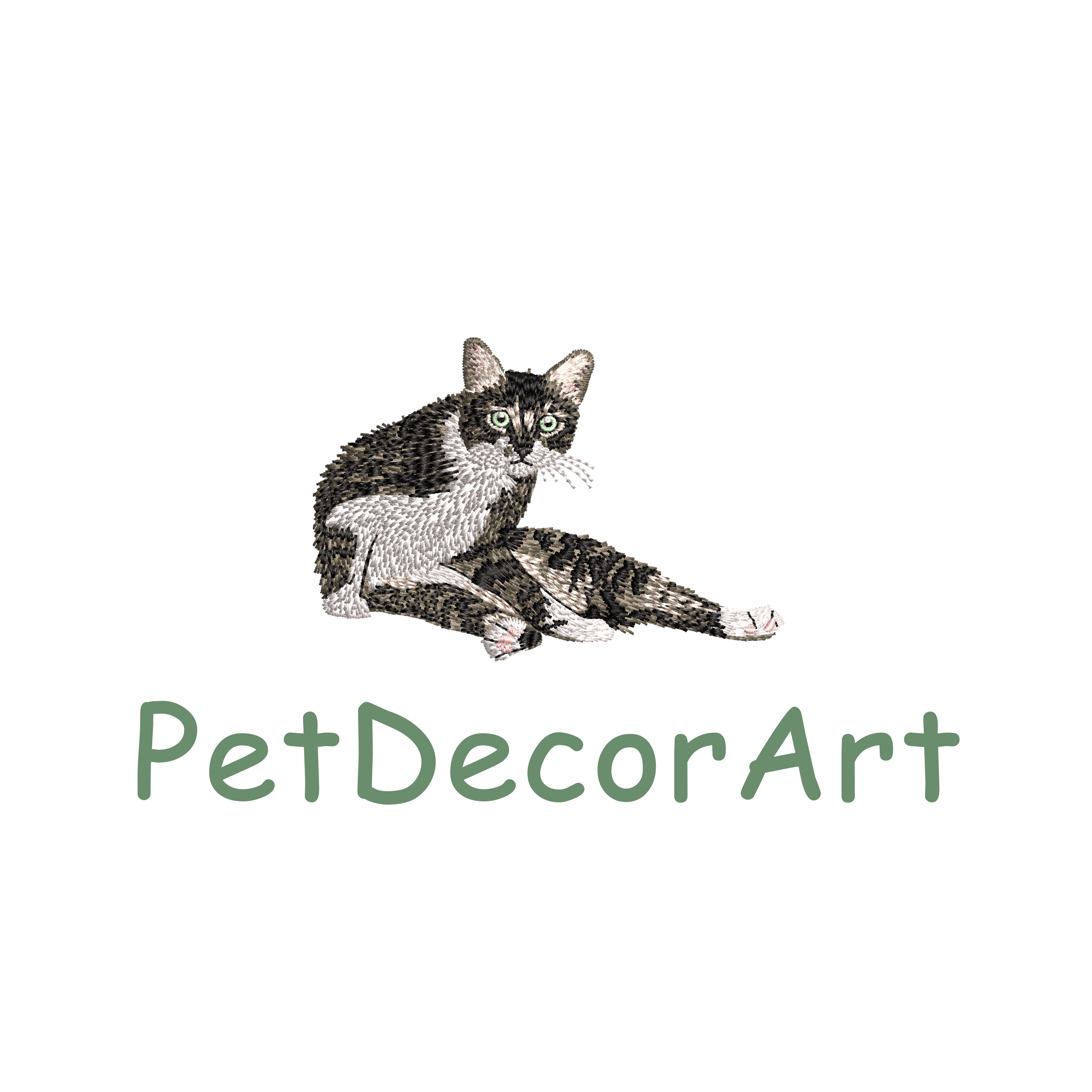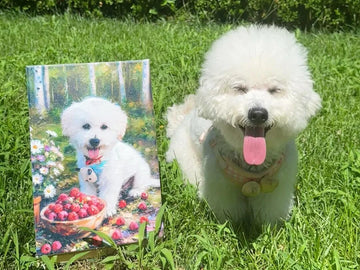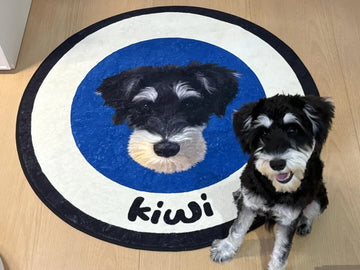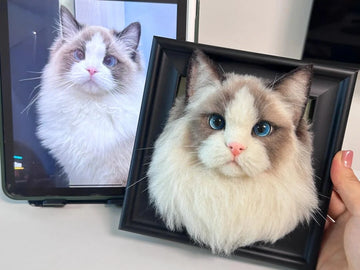Artificial intelligence is transforming the art world. Tools like MidJourney, DALL·E, and Stable Diffusion can generate images that resemble oil paintings in seconds. These programs are powerful, fast, and accessible to anyone with a computer. But how do they compare with hand-painted oil portraits created by human artists?
Table of Contents
- 1. Overview of Popular AI Art Tools
- 2. Likeness vs. True Detail
- 3. Capturing Emotion and Personality
- 4. Medium, Texture, and Tactile Value
- 5. Longevity and Artistic Value
- 6. PetDecorArt’s Hand-Painted Oil Portraits
- 7. Human Artists and AI: Toward Coexistence
- 8. FAQ
- 9. Conclusion
1. Overview of Popular AI Art Tools
Let’s briefly introduce the most popular AI art generators and their main strengths:
- MidJourney – Famous for its painterly, surreal quality. It generates highly stylized images, often resembling fantasy or impressionist artwork. Many use it for creative concepts, but its details can sometimes appear exaggerated or artificial.
- DALL·E – Created by OpenAI, DALL·E is versatile, capable of generating both realistic and artistic results. It is good at general likeness but tends to simplify fine textures like fur or hair.
- Stable Diffusion – An open-source model that gives artists more control and customization. While powerful, results depend heavily on prompt design, and outputs often require post-editing to feel polished.
These tools are remarkable for accessibility—anyone can create an “oil-style” portrait in seconds. Yet, their very strength (speed and automation) is also their weakness when compared with the craft of human painting.

2. Likeness vs. True Detail
AI-generated art tools excel at producing broad likeness. Upload a photo of your cat or dog, and the program can generate a digital painting that looks convincing at first glance. MidJourney might produce dramatic lighting, DALL·E may render clean shapes, and Stable Diffusion might allow layered customization.
But when you look closer, the cracks appear. AI often struggles with micro-details—the subtle way light falls across fur, the wet shine in a dog’s eye, or the tiny folds around a French Bulldog’s nose. Human artists study these elements with intention, deciding where to emphasize and how to balance accuracy with storytelling.
3. Capturing Emotion and Personality
Art is not only about likeness but also emotion. A human artist can capture personality—loyalty in a dog’s eyes, playfulness in a kitten’s posture, or the calm dignity of an older pet. These qualities are not just visual but interpretative. They come from empathy.
MidJourney, DALL·E, and Stable Diffusion, while powerful, cannot feel or interpret. Their output is based on mathematical probabilities. As a result, while the art may be beautiful, it often feels emotionally flat—a picture of a pet rather than a portrait of your pet.
4. Medium, Texture, and Tactile Value
A crucial difference lies in the medium itself. Hand-painted oil portraits are created on canvas or glass, with layers of real paint. These layers build texture—raised brushstrokes, rich pigments, and a physical presence that interacts with light. When you touch or view a hand-painted piece, you experience depth and dimension.
AI-generated works exist as digital files. They must be printed to become physical, usually on flat paper or canvas. Even high-quality prints lack the tactile texture of oil paint. The result looks like art but feels like print—smooth, uniform, and less authentic.

5. Longevity and Artistic Value
Oil paintings have survived for centuries in museums. Properly cared for, they endure as timeless heirlooms. The pigments bond with canvas or glass, and each painting carries the patina of age, becoming more valuable over time.
AI art is tied to digital storage. While files can last indefinitely, their prints lack the aura of authenticity and permanence. They are replaceable—another file, another print. What they gain in reproducibility, they lose in uniqueness and value.
6. PetDecorArt’s Hand-Painted Oil Portraits
At PetDecorArt, each oil portrait is fully hand-painted by skilled artists. Unlike AI outputs from MidJourney, DALL·E, or Stable Diffusion, which exist only as digital files, PetDecorArt works are created with real paint, on canvas or glass. The difference is striking—brushstrokes catch light, textures can be felt, and every detail is chosen with intention.
Whether it’s a Custom Oil Painting Pet Phone Case or a glass-framed painting, these artworks carry tactile and emotional depth that AI-generated art simply cannot reproduce.
7. Human Artists and AI: Toward Coexistence
The rise of AI does not mean the end of human artistry. Instead, these technologies might be best viewed as complementary. AI art tools like MidJourney, DALL·E, and Stable Diffusion are useful for quick drafts, concept exploration, or experimenting with styles. They democratize access to visual creativity.
But when it comes to personal, meaningful, and lasting portraits, especially of pets, hand-painted works remain unmatched. AI can inspire, but only human artists can interpret love, memory, and personality through their craft.

8. FAQ
Can AI-generated art fully replace hand-painted portraits?
No. While AI-generated art is fast and affordable, it lacks the tactile presence, detail, and emotional depth of hand-painted portraits. At best, it complements but does not replace traditional oil painting.
Do AI tools like MidJourney or DALL·E capture small details?
They can capture broad likeness, but often miss micro-details such as subtle fur textures or emotional nuances in a pet’s expression. Human artists excel in these areas.
Why does medium matter in art?
A painting on canvas or glass has depth, texture, and presence that digital prints cannot replicate. The feel of brushstrokes adds to the artwork’s authenticity and value.
What are AI art’s main advantages?
Speed, accessibility, and affordability. Tools like Stable Diffusion allow rapid creation of customizable art. However, they produce flat, reproducible images rather than one-of-a-kind heirlooms.
9. Conclusion
AI art tools—MidJourney, DALL·E, Stable Diffusion—are impressive innovations, capable of producing painterly effects with surprising speed. They are powerful allies for brainstorming and decoration. Yet, when it comes to portraits that matter—ones that celebrate a beloved pet’s life, personality, and memory—hand-painted oil art still stands far above.
Human artistry offers what algorithms cannot: interpretive detail, emotional resonance, and tactile authenticity. In the end, an AI portrait may look like your pet, but a hand-painted oil portrait feels like your pet—alive, personal, and timeless.




